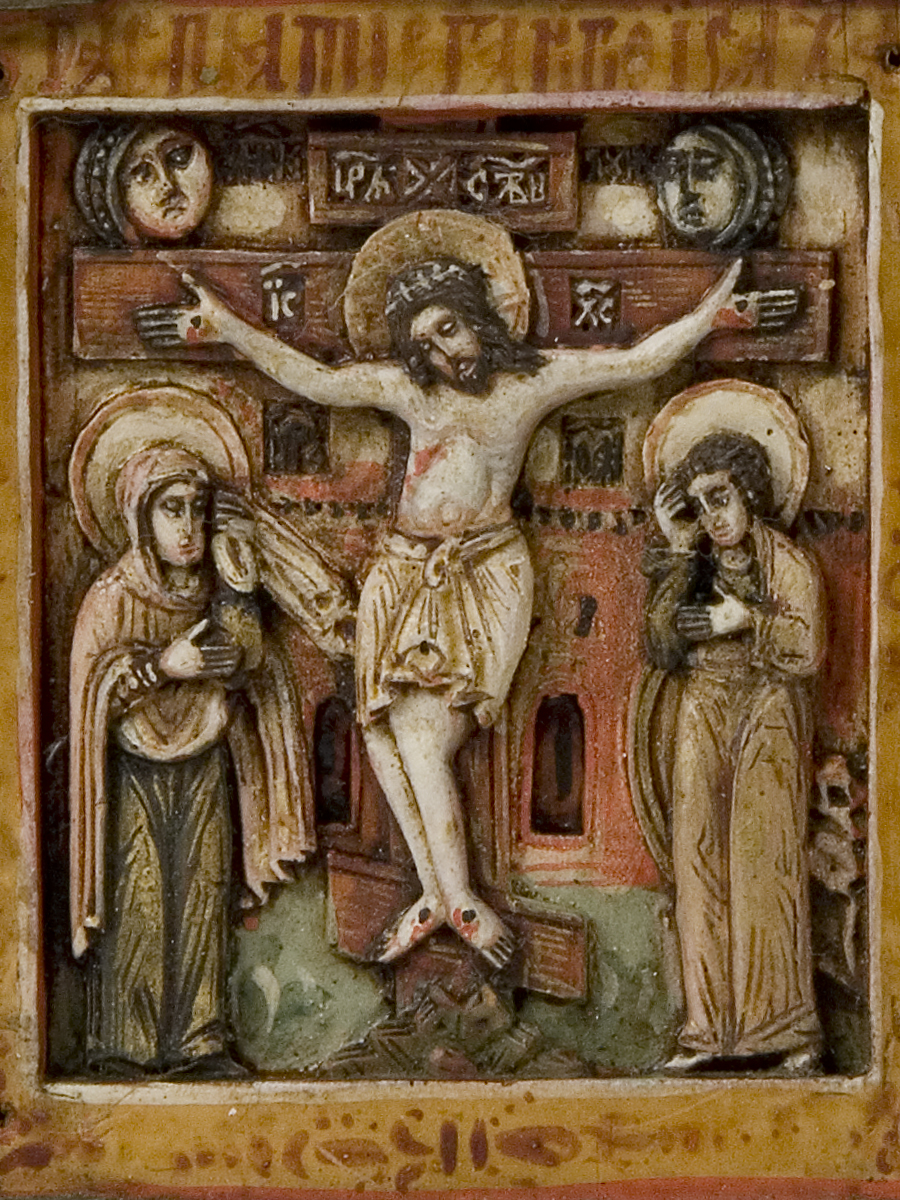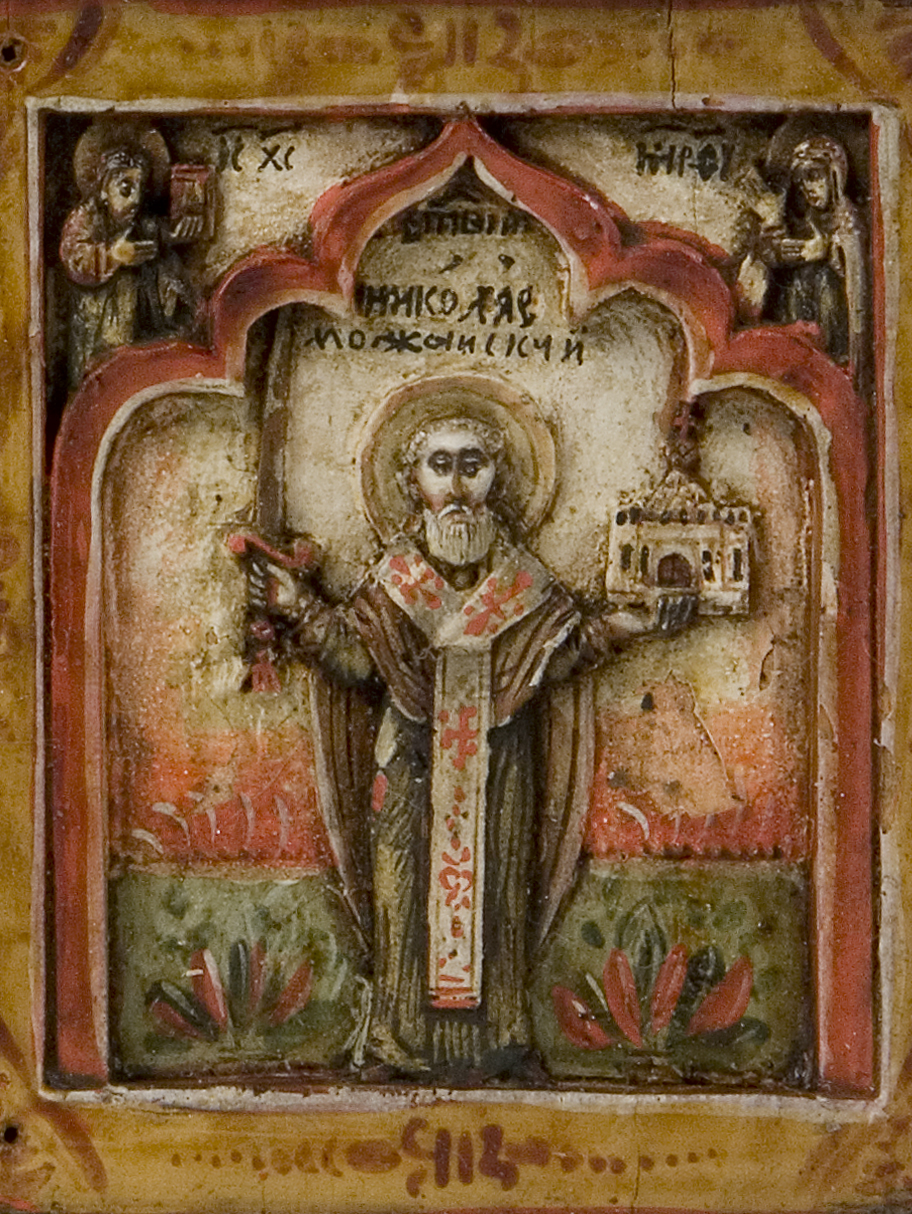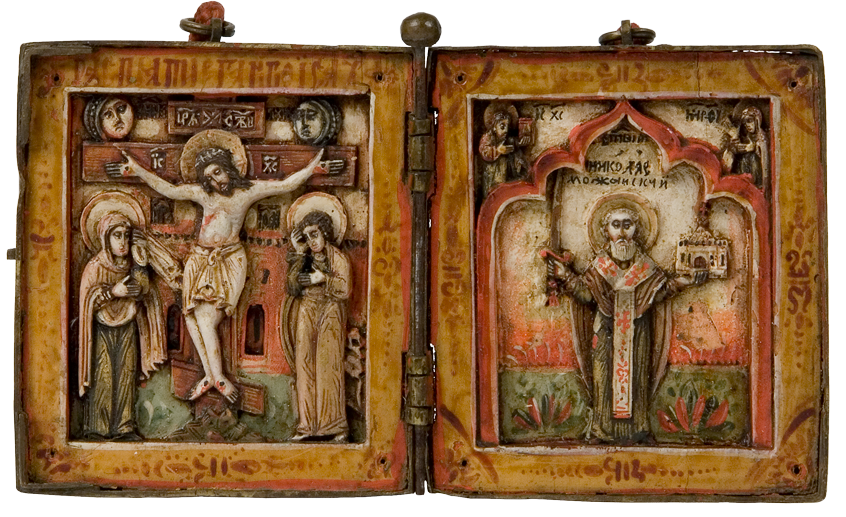Folding icon of Ivan Ustyuzhanina



The skilfully carved folding icon belonged to Ivan son of Fyodor Ustyuzhanin, a serving man of the Nerchinsk fortress. On one fold, the crucifix is depicted with the forthcoming ones, on the other - saint Nikolai Mozhaisky. The veneration of this saint was widely spread in Siberia among migrants from the Russian North, from where the owner of a folding icon could be from.
More information...In the middle of the XVII century Russian explorers reached banks of the Amur river. The administrative and military center of the Amur Region became the Nerchinsky fortress. In 1658-1689 there were “about 60 housing Cossack yards, and servicemen, except industrial, - about 200 people”. Among them was probably the owner of the folding icon. Service-men "by choice" (employment) in Russia of XV - XVII centuries were called people who carried the civil service for a fee or allowance. Many residents of Nerchinsk were people from the Russian North. Service-men and Cossacks of the fortress were engaged in the extraction of fur and valuable fish, farming, crafts, and even mining. In 1670-1703, Nerchinsk became an important center of trade with China, and its residents successfully developed diplomatic skills and customs service. That is why the field of activities of the owner of the folding icon, Ivan son of Feodor Ustyuzhanin, could be different. The specialties of the iconography, the distinctiveness and material of the frame of the item indicate that the folding icon was an expensive work made in a large art center.
«Skladen» in Russian is a folding icon. All folding icons were called «journey» or «travel» because they were taken to long trips: for a pilgrimage, trade expeditions, military campaigns. Folding icons were different in size: large were called "kiotnye", "put" – iconostasis taken to expeditions; smaller folding icons - “bodily”, “wearable”; “collar’s” - the owner wore them on a cord (string) around the neck near the collar; worn on the breast - they were worn over a shirt or even outerwear. The last two types of folding icons simultaneously served as an object of personal prayer and a talisman.
Folding icons were widespread in Russia. Leaving his home at will or because of necessity, a person wanted to have a reliable protection with him. An observant and interested contemporary wrote about it: “All warriors, without exception, always have on their chest a beautiful image in the form of a triple fold, they never go anywhere without it, and wherever the warrior is, he places it in a prominent place and worships it. This is their (Russian) custom, as we have seen.” (Journey of the Patriarch of Antioch Macarius to Russia in the middle of the XVII century, described by his son, archdeacon Pavel Aleppsky. M, 1898. Issue 3. P. 136).
Folding icons were often created by special order and on them were made inscriptions with name of the owner, his social and professional status, and other factual data. In a difficult situation, the relic could serve as an identifying document.


